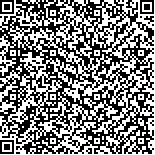|
| 引用本文: | 许晨琪,过杰,杨启霞,张晰,刘根旺,张彦敏.微波散射实验识别原油及乳化原油[J].海洋科学,2021,45(4):13-21. |
| |
|
| |
|
|
| 本文已被:浏览 1147次 下载 676次 |

码上扫一扫! |
|
|
| 微波散射实验识别原油及乳化原油 |
|
许晨琪1,2, 过杰1,3,4, 杨启霞5, 张晰6, 刘根旺6, 张彦敏7
|
|
1.中国科学院烟台海岸带研究所 中国科学院环境过程与生态修复重点实验室, 山东 烟台 264003;2.中国科学院大学, 北京 100049;3.中国科学院烟台海岸带研究所 山东省海岸带环境过程重点实验室, 山东 烟台 264003;4.中国科学院海洋大科学中心, 山东 青岛 266071;5.烟台大学环境与材料工程学院, 山东 烟台 264005;6.自然资源部第一海洋研究所, 山东 青岛 266061;7.中国海洋大学, 山东 青岛 266100
|
|
| 摘要: |
| 海上原油泄漏在其风化迁移过程中会形成不同浓度的乳化物,严重威胁海洋生态环境。合成孔径雷达(SAR)因其不受雨、云影响,可昼夜监测的优势,在海上溢油监测过程中发挥着主力军的作用,但是它在原油乳化识别方面还存在着不足。本文利用C波段全极化散射计观测原油的自然乳化过程,并利用人工制备的不同含水率的乳化油品模拟原油乳化进程观测油膜后向散射系数(NRCS)的变化。实验结果表明乳化原油NRCS高于未乳化原油,且油膜乳化程度越高相应的NRCS越大。通过油水散射差值(Δσ0)与阻尼比(DR)发现能够识别乳化与未乳化原油,反映油膜乳化程度的变化,且在VV极化下效果最佳。 |
| 关键词: 乳化原油识别 含水率 后向散射系数 阻尼比 |
| DOI:10.11759/hykx20200525002 |
| 分类号:P76 |
| 基金项目:国家自然科学基金(42076197,41576032,41576170);国家重点研发计划项目(2017YFC1405600);中国科学院海洋大科学中心重点部署项目(COMS2019J05) |
|
| Identification of crude oil and emulsified crude oil based on microwave scattering experiment |
|
XU Chen-qi1,2, GUO Jie1,3,4, YANG Qi-xia5, ZHANG Xi6, LIU Gen-wang6, ZHANG Yan-min7
|
|
1.Yantai Institute of Coastal Zone Research, Chinese Academy of Sciences(CAS), CAS Key Laboratory of Coastal Environmental Processes and Ecological Remediation, Yantai 264003, China;2.University of Chinese Academy of Sciences, Beijing 100049, China;3.Shandong Key Laboratory of Coastal Environmental Processes, Yantai Institute of Coastal Zone Research, Chinese Academy of Sciences, Yantai 264003, China;4.Center for Ocean Mega-Science, CAS, Qingdao 266071, China;5.School of environmental and material engineering, Yantai University, Yantai 264005, China;6.First Institute of Oceanography, Ministry of Natural Resources, Qingdao 266061, China;7.Ocean university of China, Qingdao 266100, China
|
| Abstract: |
| The leaked of crude oil will form emulsions of different concentrations in the process of weathering and migration, which poses a serious threat to the marine ecological environment. Synthetic aperture radar (SAR) plays a major role in the observation of the extent of oil spills on the sea surface which is not affected by rain and clouds and has the advantage of day and night monitoring. However, there are some deficiencies in the identification of emulsified crude oil still exist. In this paper, the natural emulsification of crude oil was observed by C-band full-polarization microwave scatterometer, emulsification process of crude oil simulated by manually prepared oil samples with different moisture content was also observed to study the change of the normalized radar cross section (NRCS). The experimental results show that NRCS of emulsified crude oil is higher than that of crude oil, and the higher the emulsification degree is, the higher the NRCS of oil film is. NRCS differences between oil and water (Δσ0) and damping ratio (DR) can identify emulsified and non-emulsified crude oil, reflect the change of the degree of oil film emulsification, and in VV polarization is the best. |
| Key words: identification of emulsified crude oil moisture content normalized radar cross section damping ratio |
|
|
|
|
|
|
